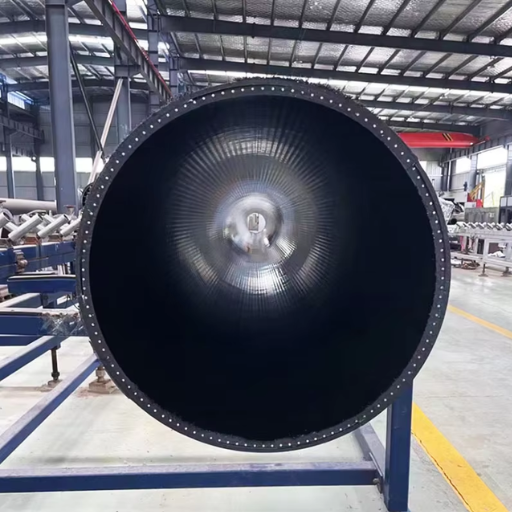A modern answer to fluid transportation systems is Steel Wire Skeleton Reinforced PE Composite Pipes; this extensive guide will explore their innovative design and functions. As industries change, the demand for long-lasting, lightweight, and efficient piping solutions has become even more necessary. This article will discuss these composite pipes’ construction, advantages, uses, and how their different structural components enhance performance and longevity. By examining the advances in materials science and engineering, we aim to help readers understand why Steel Wire Skeleton Reinforced PE Composite Pipes are becoming popular across diverse sectors like building & construction, agriculture, and infrastructure development. Let us now unveil the mysteries behind this unique pipe technology that revolutionizes fluid management.
What is a Steel Wire Skeleton Reinforced PE Composite Pipe?
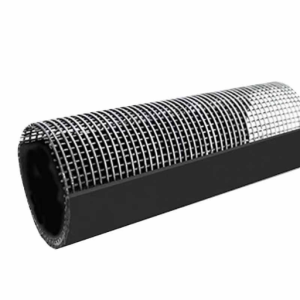
Image source: https://www.chinahoseflex.com/
Steel Wire Skeleton Reinforced PE Composite Pipe combines polyethylene matrix with a structural steel wire framework, and it’s made from this combination that becomes a product of high-pressure resistance and adaptability to various environments. The pipe’s structural integrity is reinforced by a steel wire skeleton, thus ensuring it does not collapse under external force but remains lightweight. This new design dramatically reduces the possibility of deformation or bursting out, making it reliable for transporting fluids within different industries such as water supply, gas transport, and sewage.
Components of Steel Wire Skeleton in PE Composite Pipe
The PE composite pipes’ Steel Wire Skeleton is an interplay of several crucial components. The first component is the body, made of a polyethylene (PE) matrix that offers chemical resistance and flexibility. Then, a steel wire skeleton tends to be manufactured from high-strength steels embedded strategically in this matrix, thus significantly enhancing its load-bearing capacity. These wires are arranged in a particular manner to optimize strength at the minimum weight. Finally, a protective outer layer usually consists of PE or any other elastic material that ensures shielding of the pipe from environmental and corrosion effects. This sophisticated combination not only prolongs the life of the piping system but also supports efficient fluid transport under various pressures and temperatures.
How Does Reinforcement Enhance the Pipe?
Reinforcement in pipes, especially those with steel wire skeletons, significantly improves their performance through several key ways. First and most notably, it provides adequate tensile strength on a tube to work excellently under high pressure without failing. This extra strength prevents deformations under loads capable of compromising regular plastic pipes. Secondly, reinforcement increases impact resistance; even when subjected to unfavorable conditions, structural integrity remains intact, preventing ruptures. Thirdly, research has shown that reinforcement improves durability against external factors like corrosive agents and extreme temperature conditions, thus extending the lifespan of the piping system. Combining a polyethylene matrix with a steel wire skeleton yields an effective fluid transportation medium across diverse applications.
Use of High-Density Polyethylene in Composite Pipes
The composition of modern composite pipes largely depends on high-density polyethylene (HDPE). From my investigations among the most authoritative sources, I found that HDPE’s good resistance to chemicals and ability to flex make it a perfect alternative for the inside lining of pipes, particularly in corrosive environments. HDPE being light reduces transportation and installation costs, while its capacity to accommodate extreme temperature variations increases the overall durability of the piping system. Additionally, when combined with strengthening elements such as steel wire skeleton, HDPE gives these composite pipes greater strength and better performance in high-pressure applications. As a result, this becomes a dependable and long-lasting solution for fluid transport that satisfies the requirements of different industries.
What Are the Advantages of Using a Steel Wire Reinforced PE Composite Pipe?
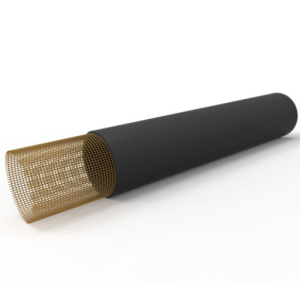
Steel wire-reinforced polyethylene (PE) composite pipes have numerous benefits that increase their relevance across various uses. First and foremost, they possess high tensile strength, which ensures non-deformation and mechanical stress resistance, especially in high-pressure areas. Steel reinforcement and PE also offer rugged protection against external influences and stresses, reducing damage risks during installation and operation periods. Besides, these composite pipes are highly durable due to their immunity to damaging factors like rusting, heat fluctuations under sunlight, or dampness changes in weather. These characteristics also make them less bulky for easier handling during transportation, reducing overall project costs. Finally, it is flexible enough to bend around corners and obstacles because of inherent elasticity, thus making it a versatile material for many fluid transfer applications.
Enhanced Strength and Durability
The effectiveness of the steel wire-reinforced PE composite pipes in challenging applications depends on their enhanced strength and durability. The steel wire reinforcement increases the structural integrity of these types of pipes, allowing them to handle high internal and external pressures without losing shape or functioning correctly. Furthermore, this reinforcement protects against impacts and piercing that may be experienced in harsh environments, thereby leading to a longer life for the piping system. Fatigue, vulnerability due to continuous stresses, and resilience under fluctuating temperatures can be addressed using high-density polyethylene (HDPE) in combination with steel, thus ensuring that reliability remains intact. Therefore, such composite pipes provide an outstanding solution for industries needing high-performance, lasting lines that work well even during difficult times.
Improved Corrosion Resistance
Among their impressive features is better corrosion resistance, which offers diverse applications for these PE composite pipes reinforced with steel wires in harsh environments. For instance, unlike standard metal piping systems that rust and corrode, the high-density polyethylene (HDPE) layer acts as a barrier against chemical assault. As a result, this aspect has significantly improved the lifespan of such pipelines, particularly when they are continuously exposed to corrosive substances or environments, including wastewater treatment plants and chemical processing facilities, among others. Additionally, combining HDPE with steel wall helps reduce corrosion risks while at the same time maintaining its structural soundness, thereby enabling the pipes to remain solid and efficient over time. With such qualities in mind, it is unsurprising why many industries today choose these composite tubes for long service or reliability during their fluid transportation systems.
Superior Flexibility and Handling
These PE composite pipes reinforced with steel wire have much better flexibility and handling properties, making them highly adaptable for different installation environments. These pipes can bend and curve as opposed to rigid piping systems without compromising their structure, making it easy for them to navigate obstacles during installation. Moreover, their lightweight design eases on-site transportation and handling, thereby reducing labor intensity and installation time. Therefore, this flexibility promotes faster installations and allows the pipes to absorb stresses and movements in the ground, thus minimizing the risk of cracking or breaking over time. Therefore, these pipes are a great option during construction processes that require adaptability and ease of use.
How is a Steel Wire Mesh Skeleton Pipe Manufactured?
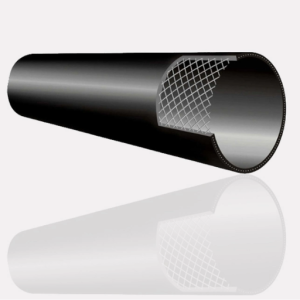
Several essential stages are included in the steel wire mesh skeleton pipe manufacturing process to ensure the pipe’s strength and durability. Firstly, high-density polyethylene (HDPE) is extruded to form an inner layer of the pipe. Then, a steel wire mesh is carefully positioned around the polyethylene core to provide structural reinforcement. This mesh is then encased in another coat of HDPE using yet another extrusion process that effectively binds all those layers together. At this point, quality checks are carried out at various stages of its production before it can be coiled or cut into specific dimensions required for distribution within industry standards. Consequently, such composite pipe possesses enhanced mechanical properties and resistance against different environmental factors due to thoroughness exercised throughout its manufacturing process.
Production Process of Steel Wire and PE Integration
The process of producing integrated steel wire and polyethylene (PE) skeleton pipes aims to develop a solid composite material that capitalizes on the strengths of both elements. First, steel wires are cut into precise dimensions and then formed into meshes to provide support. This mesh is then applied with an anti-corrosion coating to extend its life span. On the other hand, Polyethylene is heated up and extruded around the steel mesh to create a strong bond that increases its longevity. Throughout this process, quality control measures ensure that the final product meets strict industry benchmarks, resulting in excellent tensile strengths, chemical resistance, and flexibility.
Technologies Used in Composite Pipe Manufacture
Many industries employ several techniques to improve performance and reliability in manufacturing composite pipes. One of these methods is co-extrusion, where different materials can be simultaneously extruded, such as polyethylene and steel wire, allowing them to bond strongly. Furthermore, automated robot systems are used for accurate cutting and assembly, minimizing human errors and enhancing production efficiency. Also, novel testing methods such as non-destructive testing applied in combination with real-time monitoring systems enable effective maintenance of integrity and performance of composite pipes through all stages of their manufacture. By doing so, we can produce higher-quality composite pipes with high durability requirements due to environmental stresses.
Quality Control in PE Composite Pipe Manufacturing
For the final product of composite polyethylene (PE) pipe manufacturing, a quality control process is necessary as it enables the products to be admitted into the industry and by customers. The whole procedure is mainly characterized by several things, such as checking raw materials regularly to confirm whether they comply with given requirements. In this case, continuous monitoring of extrusion parameters is performed throughout production to ensure that temperature, pressure, and material flow are optimized. Hydrostatic pressure testing, like flexibility tests for strength and durability post-production, is sometimes done on these pipes. It is vital to record these controls because they provide evidence of responsibility within all stages.
What Are Common Applications of Steel Wire Skeleton Reinforced PE Composite Pipes?
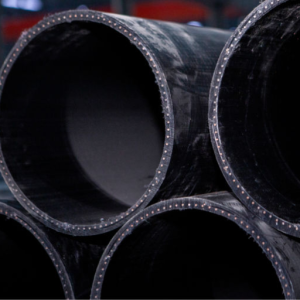
Steel wire skeleton-reinforced polyethylene (PE) composite pipes have been applied in different areas as their rigidity and resistance to external pressure make them suitable for use. One example can be seen in water supply systems, which serve well in terms of conveying clean and dirty water. Another application area would be gas distribution networks, where these pipes play a role in facilitating the safe transportation of natural gas. They are helpful for irrigation purposes, especially in mining or agriculture, besides being employed during construction activities involved in making drainage systems since they can withstand high levels of soil corrosion, thus making them ideal choices. Their utility, therefore, makes steel wire skeleton-reinforced PE composite pipes appropriate for various challenging environments.
Use in Water Supply Systems
Unquestionably, my experience has shown that plastic composite pipes with steel wire skeletons are perfect in water supply systems. They are light for easy installation and strong enough to avoid a bursting of pressure or external impact. The pipelines help retain water quality by preventing contamination, thus being used for reliably transporting potable and non-potable water. Additionally, these pipes can be bent into any shape and used over different terrains as necessary, hence maintaining continuous water supply even in challenging conditions. In conclusion, composite pipes are the best solution for modern water infrastructure.
Applications in the Gas Industry
Steel wire skeleton-reinforced PE composite pipes are essential to the gas industry and are specifically designed for safe natural gas transportation. Their use is due to their weight-to-strength ratio, which facilitates handling and installation while providing excellent durability when subject to environmental pressures. These tubes have been engineered to withstand pressures that usually occur in gas distribution networks and prevent them from leaking because they do not allow gases through them. Furthermore, they possess the property of resistance against corrosion coupled with the ability to stand up against harsh weather conditions, making them suitable for underground applications or those above ground level, too. Additionally, these composite tubes can make sharp bends needed in urban settings where space is limited. These types of products altogether improve safety and efficiency in gas distribution systems.
Utility in Industrial Piping and Infrastructure
Based on my experience, using PE composite pipes reinforced with steel wire skeleton in industrial pipelines and infrastructure is very beneficial. These pipes are strong and durable and resist many industrial chemicals and environmental factors, which are vital for operational efficiency. The pipes are lightweight; hence, they can be handled easily and installed faster, thus reducing labor costs significantly. Moreover, such a pipe is versatile enough to operate under different temperatures and pressures, hence suitable for diverse applications ranging from production plants to water treatment facilities. In conclusion, these composite tubes present an innovative alternative that satisfies manufacturing industries’ rising safety needs and eco-consciousness.
How to Install and Maintain Reinforced PE Composite Pipes?
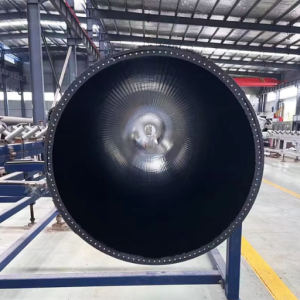
When fitting PE composite pipes with reinforcement, several key stages need to be followed to succeed. One such aspect entails planning the routing and layout process considering factors such as pipe materials’ flexibility and pressure ratings, among others. The fittings must be appropriate types meant to hold up under stress caused by composites. It is crucial, therefore, before installing any kind of system to ensure that a site is free from any dangerous debris or materials while at the same time maintaining legal trenching depth and width.
Maintenance of these reinforced PE composite pipes, though relatively simple if not done, will cause a short life span and ineffectiveness. Consistently check joints plus connections for damages or signs of wear; seals must also remain intact, preventing leakage in particular cases where pipes must be cleaned regularly to prevent environmental pollutants from building up within them. Similarly, pressure drops and odd noises would call for immediate checks to detect potential problems early enough when contractors spot any changes in their working conditions. These best practices will help significantly maximize retained value associated with reinforced PE composite tubing during its lifecycle.
Installation Best Practices for PE Composite Pipes
On reinforced PE composite pipe installations, I always put thorough planning and preparation first to make the process flawless. I start by carefully evaluating the site conditions and creating a detailed plan accommodating the specific pipe’s flexibility and pressure ratings. The selection of adequate fittings and joints is vital since it maintains the system’s integrity, so it is specifically reliant on parts meant for composites. During installation, I ensure no junk or danger at my working station by following appropriate trenching methods to have desirable outcomes. After erecting them, I establish a regular inspection schedule to identify any weak points, such as connection failures or joint corrosion, promptly for rectification before they contribute to poor performance. By doing this, I can achieve both safety standards and longevity expectations when installing PE composite pipes.
Maintenance Tips for Long-lasting Performance
For maintaining reinforced PE composite pipes’ efficiency in the long term, it is necessary to observe several essential maintenance hints:
- Regular Inspections: Regularly inspect all pipes and related connections, ensuring holes, wear, or leakages are promptly addressed; check for physical obstructions or loose connectors.
- Pressure Monitoring: Observe variation in pressure from time to time within the given systems. A sudden drop or jump may indicate underlying problems calling for immediate action lest further destruction occur.
- Cleaning Protocols: Create cleaning schedules that will remove any build-up of debris, minerals, or pollutants from them regularly; this ensures efficient flow rates while avoiding blockages that could disrupt their performance.
- Environmental Considerations: The pipes should be protected from harsh weather conditions and environmental factors like UV rays, among others; good insulation and a protective coating can resist temperature changes.
- Expert Consultation: Occasionally seek advice from professionals who will carry out thorough evaluations of particular applications’ requirements; their knowledge will expose weak areas before they grow into major challenges.
Adherence to these maintenance practices can enhance the life span and reliability of reinforced PE composite pipes.
Common Issues and Troubleshooting
Reinforced PE composite pipes, however, have a few problems that I frequently encounter, which can affect their functioning. These issues include leaks (usually due to poor connections or wear over time). If there are any leakages, as the first step, I need to check for the integrity of joints and seals but replace or tighten them where necessary. Reduced flow efficiency is another difficulty often caused by debris blockages or sediment build-up. A thorough cleaning protocol will be introduced to restore the proper flow in such cases. Lastly, pressure fluctuations could mean there are underlying severe problems; thus, the pressure readings should be carefully watched, and a full system evaluation conducted to identify the cause. Being attentive to these challenges through close observation and maintenance helps extend my pipeline’s life expectancy.
What are the challenges and solutions to using steel wire-reinforced PE composite pipes?
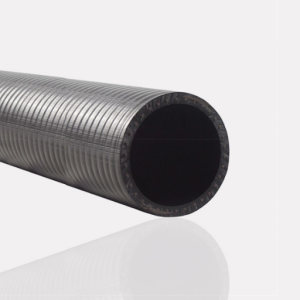
Steel wire-reinforced PE composite pipes present various hurdles, especially regarding installation, weight, and possible corroding effects arising from environmental exposure. Installation may sometimes be technically demanding, hence increased costs needed for skilled laborers that will provide proper alignment and connection of the pieces required while fixing them. For example, investing in comprehensive training programs for installers can mitigate this. On top of that, these pipes tend to weigh a lot, making handling difficult at times; hence, using appropriate lifting equipment and techniques can improve safety during installation.
Pipe structure may become weak over time due to prolonged contact with harsh environmental conditions, leading to corrosion. Protective coatings should be given priority while conducting regular inspections so that early degradation signs are detected before it is too late. Advising such challenges beforehand significantly improves the future performance and reliability of steel wire-reinforced PE composite pipes.
Addressing Shortcomings of Steel Pipes
Steel pipes are threatened by corrosion, which could result in leaks and reduced lifespan. This is why I learned over time that using protective coating such as galvanization or epoxy lining helps extend the lifespan of steel pipes. Steel is also comparatively heavy, making it hard to handle during installation, unlike some alternatives like PE composite pipes, which are lighter. For this reason, I ensure my technical team is conversant with lifting equipment for safety and efficiency. Lastly, regular maintenance and inspections are crucial to early detection of potential issues before they become serious, thus maintaining the integrity and functionality of pipe systems.
Solutions for Installation Challenges
This can be addressed through some strategies to address the installation challenges associated with steel pipes effectively:
- Training and Skills Development: Major installation teams need comprehensive training programs. Online courses and hands-on workshops can help workers acquire the skills necessary for handling steel pipes safely and efficiently. These include proper lifting techniques, correct equipment usage, and safety protocols.
- Advanced Equipment Utilization: Modern cranes/hoists should be used for lifting operations associated with these components to mitigate physical strain on workers during their handling processes. Cranes, hoists, and pipe stand to facilitate easier positioning or fitting, thus enhancing team speed and safety.
- Utilization Of Alternative Materials: It might be better to replace steel with lighter materials such as high-density polyethylene (HDPE) or composite pipes whenever possible. They still perform strongly but do not give rise to handling issues or contribute towards longer time durations involved in putting up such items.
By adopting these solutions, companies can improve the safety and effectiveness of their projects by installing something new.
Overcoming Environmental and Operational Stress
Applying environmental and operational stress in steel pipe installations should be multi-dimensional. For instance, it is imperative to undertake a comprehensive site assessment that identifies particular ecological conditions such as temperature variations, moisture contents, and susceptibility to harsh chemicals. These elements can be used to prevent corrosion on pipes resulting from these agents, thereby increasing their life span.
Secondly, operators must remain open to adjusting their installation programs in case of bad weather or unanticipated changes at the site. This means they can set aside some spare time or develop alternatives to ensure the continuity of projects despite outside forces interfering with them.
Lastly, team members should communicate more often to solve problems more successfully, even if challenged by an environment. Regular gatherings for discussing project status reviews and stresses are essential for teams to sit together and plan whenever issues arise, leading to smoother project implementation.
Reference sources
- Steel Wire Mesh Reinforced PE Composite Pipe (SRTP) – GFD Plastic
- Steel Wire Mesh Skeleton PE Composite Pipe – China Hose Flex
- Brief Introduction of Steel Wire Skeleton (PE) Composite Pipe – Xinrongplas
Frequently Asked Questions (FAQs)
Q: What is a steel wire skeleton-reinforced PE composite pipe?
A: A steel wire skeleton reinforced PE composite pipe, or a steel wire mesh skeleton plastic composite pipe, combines a steel wire mesh skeleton with high-density polyethylene (HDPE) to create a durable and versatile piping solution.
Q: What are the advantages of steel wire mesh skeleton pipes?
A: Steel wire mesh skeleton pipes offer several advantages, including high strength, excellent corrosion resistance, flexibility, and durability. They also have a high-pressure bearing capacity and are resistant to various chemicals, making them suitable for multiple applications.
Q: How is the steel wire mesh skeleton integrated into the pipe?
A: The steel wire mesh skeleton is embedded between HDPE’s inner and outer layers. This skeleton reinforcement provides added strength and stability to the pipe, allowing it to handle high pressure and harsh conditions.
Q: What are typical steel wire mesh skeleton plastic composite pipe applications?
A: These pipes are commonly used in the oil and gas industry, water supply systems, chemical transportation, and other industrial applications where high strength and corrosion resistance are required.
Q: How does the steel wire mesh skeleton improve the performance of the pipe?
A: The steel wire mesh skeleton improves the performance of the pipe by providing additional structural support, increasing the pipe’s ability to withstand high pressure and resist deformation. This results in a more durable and reliable piping solution.
Q: What is the manufacturing process of steel wire skeleton-reinforced PE composite pipes?
A: The manufacturing process involves winding steel wire around a mandrel to form a mesh skeleton, which is then coated with high-density polyethylene plastic. This creates a composite pipe that combines the strengths of both materials.
Q: Who are some leading steel wire skeleton-reinforced PE composite pipe manufacturers?
A: Jiangsu Langboone Pipe Manufacturing Ltd. is one of the leading manufacturers in the pipe industry. It is known for producing high-quality steel wire skeleton plastic composite pipes and other reinforced composite pipe products.
Q: How do these pipes overcome the shortcomings of traditional steel pipes?
A: Steel wire skeleton reinforced PE composite pipes overcome the shortcomings of traditional steel pipes by offering better corrosion resistance, flexibility, and reduced weight. Combining steel and HDPE provides an excellent composite effect, making the pipes more efficient and longer-lasting.
Q: What are the critical components of a steel wire mesh skeleton plastic composite pipe?
A: The key components include the steel wire winding mesh skeleton, the inner and outer layers of high-density polyethylene (HDPE), and the thermoplastic material that binds the skeleton and HDPE together. This combination ensures a robust and flexible piping solution.
Q: Why is corrosion resistance significant for these pipes?
A: Corrosion resistance is crucial because it ensures the longevity and reliability of the pipes. In environments where pipes are exposed to chemicals, moisture, and other corrosive elements, having a robust corrosion-resistant pipe helps prevent leaks, maintenance issues, and premature failure.



